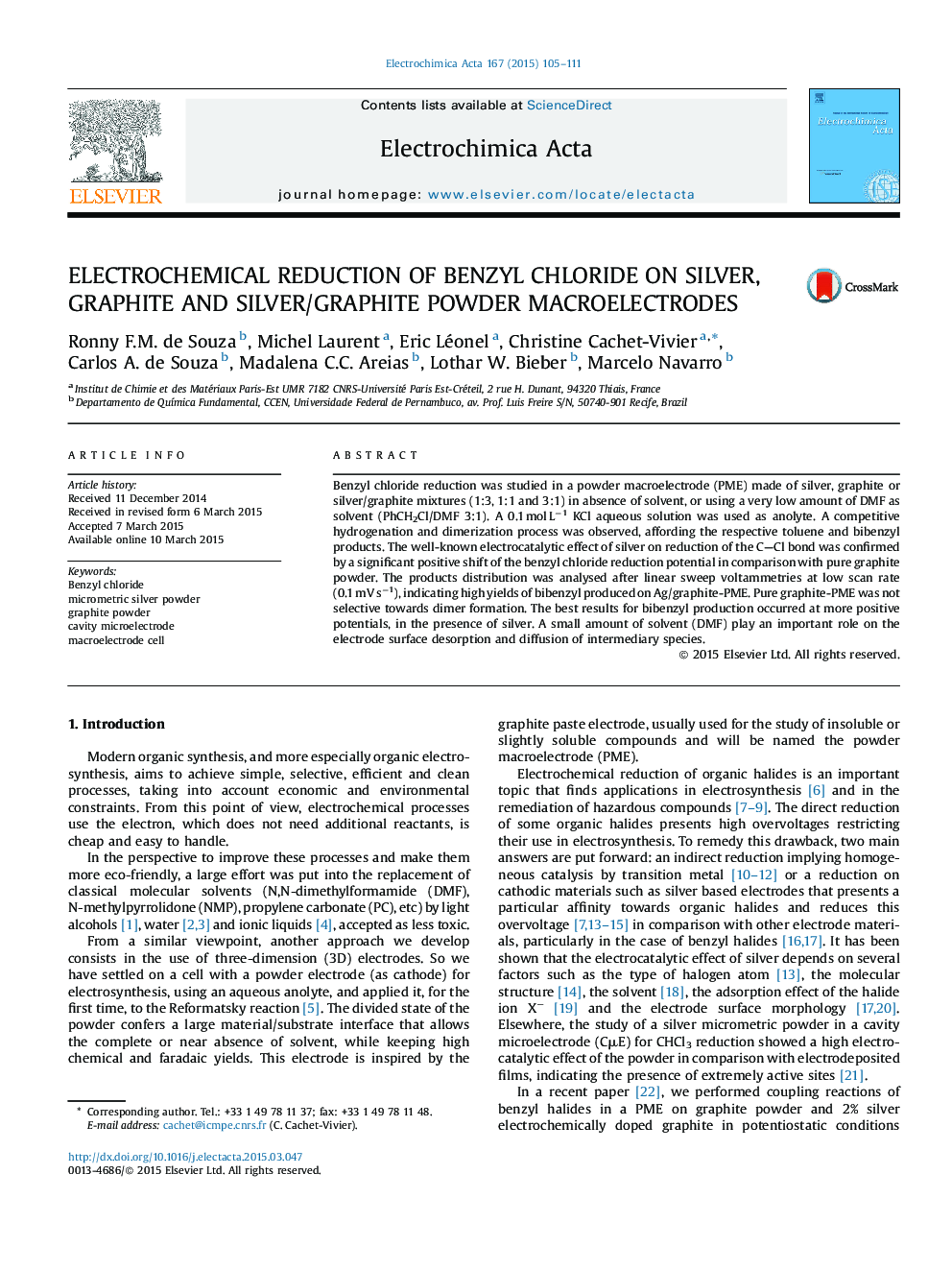| Article ID | Journal | Published Year | Pages | File Type |
|---|---|---|---|---|
| 184330 | Electrochimica Acta | 2015 | 7 Pages |
•Voltammetry performed at very low scan rate shows that benzyl chloride occurs at ∼−0.7 V/Ag/AgCl for high silver percentages in cathodic materials, i.e. at potentials much higher than in usual voltammetry conditions.•Even using an aqueous electrolyte, benzyl chloride was totally reduced on cathodic powders made of silver-graphite mixtures and a high estimated yield of dimer was obtained (89%).•Without DMF, the higher yield of dimer (89%) was obtained on 25% silver −75% graphite mixture with a 62% faradaic yield.•With DMF, the higher yield of dimer (85%) was obtained on 100% silver with a 100% faradaic yield.
Benzyl chloride reduction was studied in a powder macroelectrode (PME) made of silver, graphite or silver/graphite mixtures (1:3, 1:1 and 3:1) in absence of solvent, or using a very low amount of DMF as solvent (PhCH2Cl/DMF 3:1). A 0.1 mol L−1 KCl aqueous solution was used as anolyte. A competitive hydrogenation and dimerization process was observed, affording the respective toluene and bibenzyl products. The well-known electrocatalytic effect of silver on reduction of the CCl bond was confirmed by a significant positive shift of the benzyl chloride reduction potential in comparison with pure graphite powder. The products distribution was analysed after linear sweep voltammetries at low scan rate (0.1 mV s−1), indicating high yields of bibenzyl produced on Ag/graphite-PME. Pure graphite-PME was not selective towards dimer formation. The best results for bibenzyl production occurred at more positive potentials, in the presence of silver. A small amount of solvent (DMF) play an important role on the electrode surface desorption and diffusion of intermediary species.
